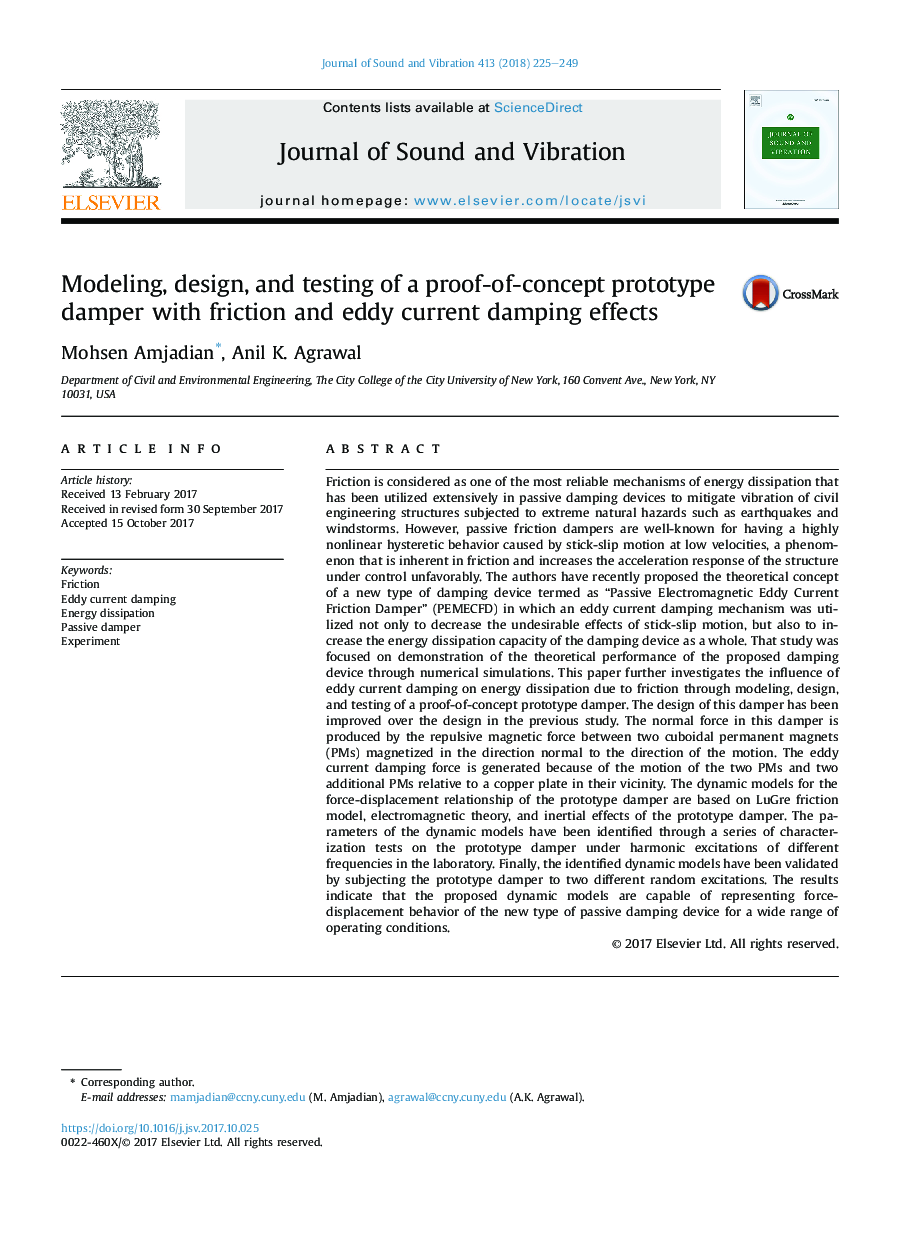| کد مقاله | کد نشریه | سال انتشار | مقاله انگلیسی | نسخه تمام متن |
|---|---|---|---|---|
| 6754170 | 1430820 | 2018 | 25 صفحه PDF | دانلود رایگان |
عنوان انگلیسی مقاله ISI
Modeling, design, and testing of a proof-of-concept prototype damper with friction and eddy current damping effects
ترجمه فارسی عنوان
مدل سازی، طراحی و آزمایش یک دمپر نمونه اولیه از اثرات مفهومی با اثرات اصلاح و اصطکاک مهار جریان
دانلود مقاله + سفارش ترجمه
دانلود مقاله ISI انگلیسی
رایگان برای ایرانیان
کلمات کلیدی
اصطکاک، مرطوب کننده جریان الکتریکی، از بین بردن انرژی، دمپر غیر فعال، آزمایشی
موضوعات مرتبط
مهندسی و علوم پایه
سایر رشته های مهندسی
مهندسی عمران و سازه
چکیده انگلیسی
Friction is considered as one of the most reliable mechanisms of energy dissipation that has been utilized extensively in passive damping devices to mitigate vibration of civil engineering structures subjected to extreme natural hazards such as earthquakes and windstorms. However, passive friction dampers are well-known for having a highly nonlinear hysteretic behavior caused by stick-slip motion at low velocities, a phenomenon that is inherent in friction and increases the acceleration response of the structure under control unfavorably. The authors have recently proposed the theoretical concept of a new type of damping device termed as “Passive Electromagnetic Eddy Current Friction Damper” (PEMECFD) in which an eddy current damping mechanism was utilized not only to decrease the undesirable effects of stick-slip motion, but also to increase the energy dissipation capacity of the damping device as a whole. That study was focused on demonstration of the theoretical performance of the proposed damping device through numerical simulations. This paper further investigates the influence of eddy current damping on energy dissipation due to friction through modeling, design, and testing of a proof-of-concept prototype damper. The design of this damper has been improved over the design in the previous study. The normal force in this damper is produced by the repulsive magnetic force between two cuboidal permanent magnets (PMs) magnetized in the direction normal to the direction of the motion. The eddy current damping force is generated because of the motion of the two PMs and two additional PMs relative to a copper plate in their vicinity. The dynamic models for the force-displacement relationship of the prototype damper are based on LuGre friction model, electromagnetic theory, and inertial effects of the prototype damper. The parameters of the dynamic models have been identified through a series of characterization tests on the prototype damper under harmonic excitations of different frequencies in the laboratory. Finally, the identified dynamic models have been validated by subjecting the prototype damper to two different random excitations. The results indicate that the proposed dynamic models are capable of representing force-displacement behavior of the new type of passive damping device for a wide range of operating conditions.
ناشر
Database: Elsevier - ScienceDirect (ساینس دایرکت)
Journal: Journal of Sound and Vibration - Volume 413, 20 January 2018, Pages 225-249
Journal: Journal of Sound and Vibration - Volume 413, 20 January 2018, Pages 225-249
نویسندگان
Mohsen Amjadian, Anil K. Agrawal,
